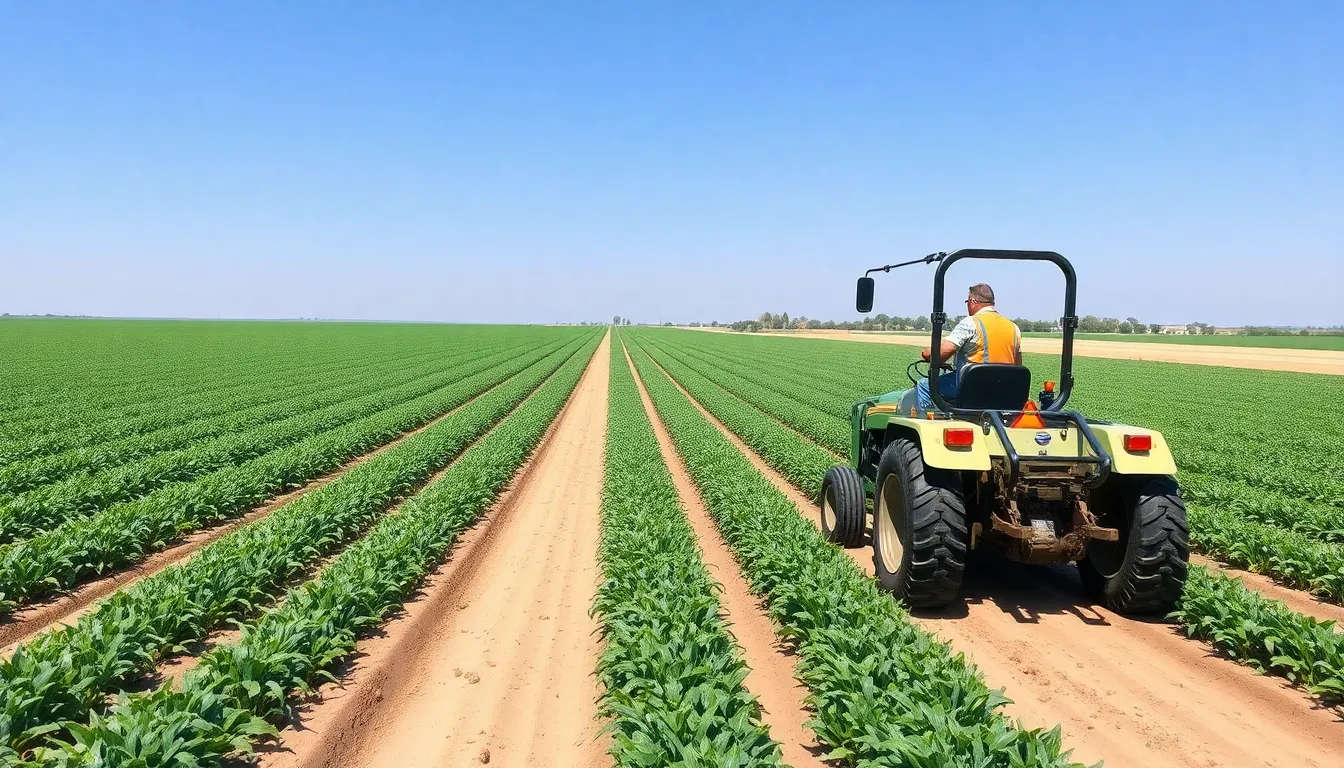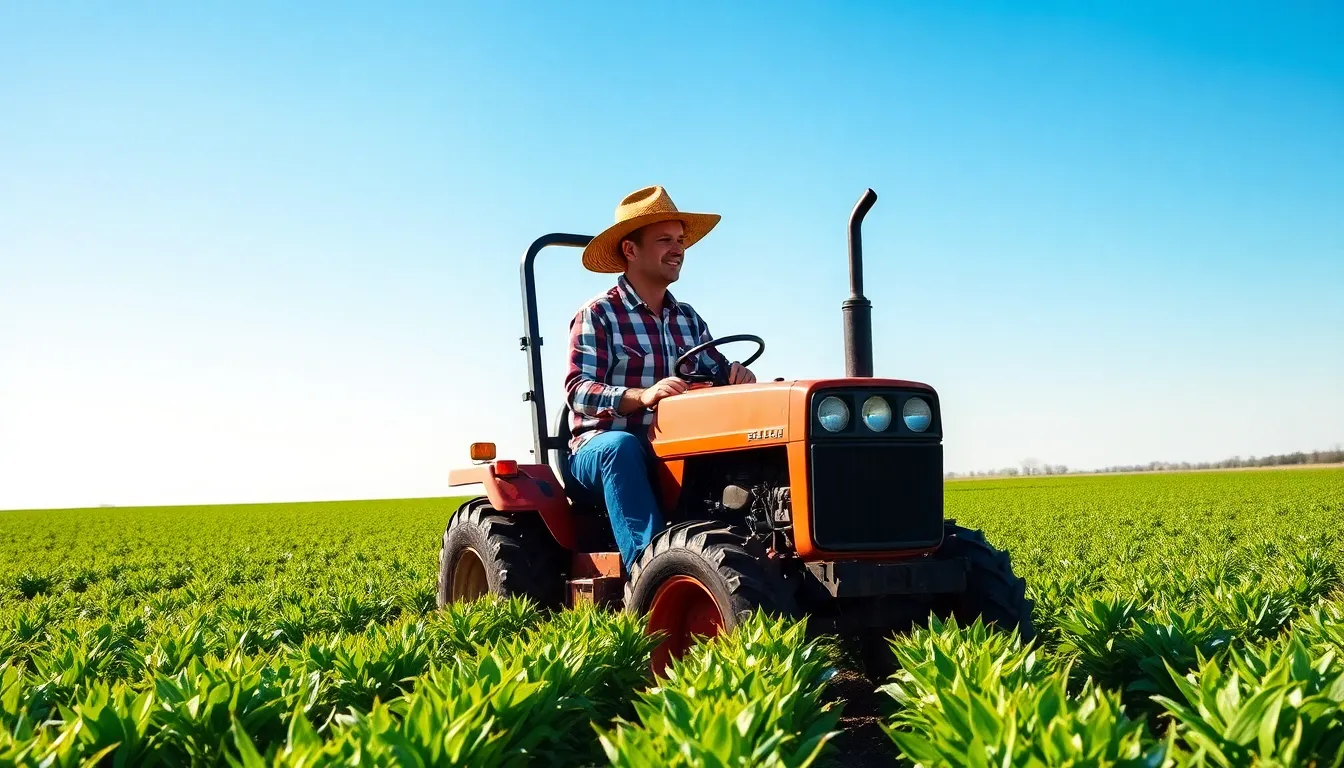The Best Fluffy Pancakes recipe you will fall in love with. Full of tips and tricks to help you make the best pancakes.

In a world where kale has become the new bacon and organic avocados cost more than a small car, the debate between organic farming and conventional farming is hotter than a jalapeño in July. On one side, we have the earthy, granola-crunching advocates of organic farming, touting benefits like sustainability and health. On the other, conventional farming supporters argue for efficiency and the ability to feed the masses without breaking the bank.
But which side truly deserves the crown? Is it the organic warriors, armed with compost and cover crops, or the conventional champions, wielding technology and fertilizers like a superhero’s utility belt? This article dives into the nitty-gritty of both farming methods, exploring their pros, cons, and everything in between. Get ready to dig deep into the dirt and discover which approach might just be the future of food.
Organic Farming vs Conventional Farming
Organic farming promotes a holistic approach to agriculture. It emphasizes sustainable practices that work in harmony with nature.
Definition and Principles
Organic farming involves cultivation practices that avoid synthetic fertilizers and pesticides. It relies on natural methods for soil fertility, such as crop rotation and composting. Farmers focus on biodiversity by integrating various crops and livestock. Additionally, they prioritize ecological balance, which enhances the resilience of farming systems. Organic certification ensures compliance with strict standards, verifying adherence to these principles.
Benefits of Organic Farming
Organic farming offers several benefits for health and environment. It reduces exposure to harmful chemicals, promoting healthier food options. Organic practices improve soil health, leading to better water retention and reduced erosion. Environmental pollution decreases due to the absence of synthetic inputs. The biodiversity supported by organic systems nurtures beneficial insects and wildlife. Moreover, organic farming often yields higher prices for farmers, promoting economic sustainability.
Overview of Conventional Farming



Conventional farming employs chemical fertilizers, pesticides, and modern farming techniques to maximize crop yields. This method centers around monoculture practices, where a single crop type is grown on a large scale, which increases efficiency in planting and harvesting.
Definition and Practices
Conventional farming defines a system that prioritizes intensive production methods. Synthetic fertilizers supply essential nutrients to crops, while herbicides and insecticides control pests and weeds. Farmers often utilize genetically modified organisms (GMOs) to enhance traits like pest resistance or drought tolerance. Equipment such as tractors and irrigation systems streamline planting and watering processes, facilitating large-scale operations.
Advantages of Conventional Farming
Conventional farming offers several advantages. Increased crop yields contribute significantly to feeding the global population. Cost-effectiveness emerges from the use of synthetic chemicals, which boosts productivity with lower labor costs. In addition, conventional practices provide farmers with consistent produce availability, essential for meeting market demands. Farmers also benefit from advanced technology, leading to improved efficiency and reduced risk of crop failure.
Key Differences Between Organic and Conventional Farming
Organic and conventional farming methods differ significantly in their approach to agriculture and resource management. Understanding these differences helps clarify the ongoing debate regarding sustainable agriculture.
Farming Methods and Techniques
Organic farming utilizes natural techniques such as crop rotation, cover cropping, and composting. These practices build soil fertility and promote biodiversity. Conventional farming employs synthetic fertilizers and pesticides to maximize yields. Additionally, monoculture is common, focusing on single crop types for efficiency. Both methods aim for productivity, yet they take distinct paths to achieve this objective.
Environmental Impact
Organic farming enhances soil health, reduces pollution, and promotes ecological balance. Practices like avoiding synthetic chemicals lead to decreased water contamination and improved wildlife habitats. Conventional farming often results in soil degradation through chemical runoff and monoculture practices. However, it achieves higher immediate yields, which can strain environmental resources. Long-term sustainability considerations differ greatly between the two approaches.
Health Considerations
Consumption of organic produce reduces exposure to harmful pesticides and chemicals. Nutritional benefits are also noted in organic foods, although research continues to evolve. Conventional farming provides affordable food options but may use chemicals linked to health risks. The safety standards for both farming types differ, prompting individuals to weigh health risks against affordability when making choices.
Economic Aspects
Understanding the economic implications of organic and conventional farming provides insight into their viability and future significance. Cost efficiency and market dynamics play critical roles in shaping farming decisions.
Cost Comparison
Organic farming often involves higher initial costs. Inputs like certified seeds and organic fertilizers generally come with a premium price. Labor requirements in organic systems also tend to be greater since farmers utilize manual techniques for pest control and weed management. In contrast, conventional farming usually leverages economies of scale, resulting in lower operational costs per unit. Chemical inputs and machinery allow conventional farmers to maximize yields while reducing labor expenditures. Profit margins vary, with organic products frequently commanding higher prices in the market, reflecting their appeal to health-conscious consumers.
Market Demand and Trends
Market demand for organic products continues to rise, driven by consumer preferences for healthier, sustainably produced food. Statista noted a robust 2022 global organic food market value of approximately $70 billion, indicating strong growth potential. Consumers increasingly prioritize transparency and environmental impacts in their purchasing decisions. Conventional farming’s efficiency and affordability attract price-sensitive shoppers. However, shifting trends indicate an expanding market share for organic products, suggesting that farmers adopting organic methods might benefit from increased sales and brand loyalty in the long run.
Conclusion
The debate between organic and conventional farming continues to shape the agricultural landscape. Each method presents unique advantages and challenges that influence farming practices and consumer choices. Organic farming promotes sustainability and health, appealing to those who prioritize environmental impact and food safety. On the other hand, conventional farming offers efficiency and cost-effectiveness, crucial for meeting the demands of a growing population.
As consumers become more aware of the implications of their food choices, the market for organic products is likely to expand. This shift highlights the importance of understanding the values and practices behind each farming method. Ultimately, the future of food may depend on finding a balance that incorporates the strengths of both organic and conventional approaches.
